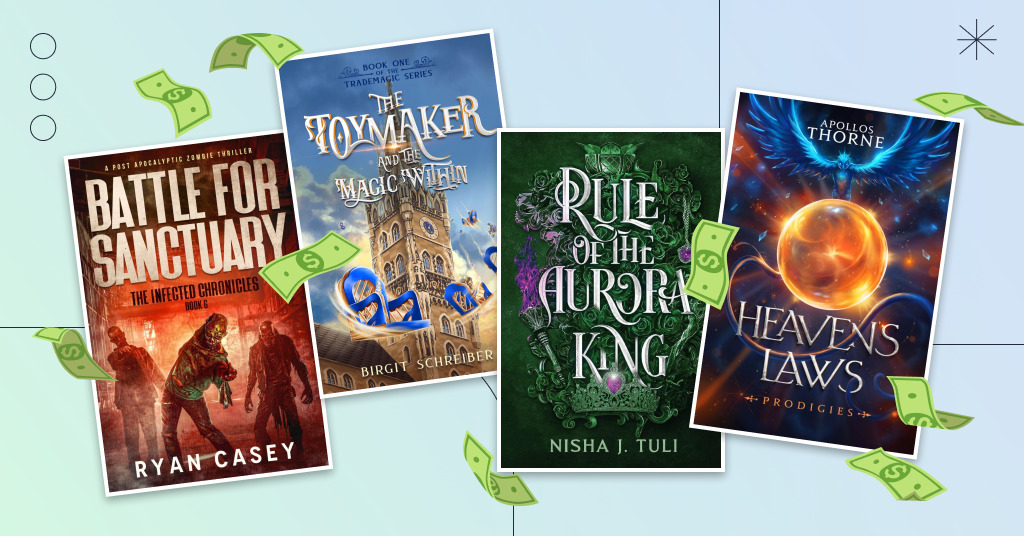Amazon KDP immediately comes to mind when we think of self-publishing platforms, right? But is this platform really perfect? After all, every user has had some questions or difficulties at least once. Today, we will discuss them and how to avoid unpleasant situations with this popular platform by using Amazon KDP alternatives. Let’s get started.
Why do indie authors choose Amazon KDP?
Amazon KDP remains one of the most popular platforms for self-published authors because it offers many advantages.
Writers can make good money, earning up to 70% in royalties for ebooks and 60% for printed books after printing costs. Joining KDP Select gives authors special marketing tools to help sell more books, but they must agree to sell their ebooks on Amazon for 90 days only. Then, Amazon lets authors publish their books in different formats, which helps reach more readers.
The platform also helps authors by showing ads for their books to customers searching for similar topics. Even authors with a few books can earn well if they market their books effectively.
However, not everything is so rosy.
What is wrong with Amazon KDP?
While Amazon KDP offers many benefits for indie authors, it has challenges and limitations. Dale L. Roberts has shared 50 common issues with this platform. Here are some of them:
- Ghost categories. Books sometimes get placed in incorrect or irrelevant categories, hurting their visibility to the target audience.
- Limited cover creator. The cover creator tool provided by KDP is often criticized for its lack of options and flexibility, making it difficult for authors to design high-quality, unique book covers.
- No split payments for co-authors. KDP doesn’t offer a feature to automatically split royalties among co-authors, which can complicate earnings distribution.
- Random account termination. Authors have reported sudden account terminations without clear explanations, causing loss of income and access to their published works.
- No interior formatting tools. Unlike some other platforms, KDP does not provide tools for interior book formatting, requiring authors to format their books externally.
- No keyword recommendation. KDP does not offer keyword recommendations, making optimizing their book’s visibility in Amazon’s search results challenging for authors.
- False takedowns. There have been instances of books being wrongly taken down for alleged policy violations, affecting authors’ sales and reputations.
- No multiple product images. KDP limits the display to only the front cover of books, not allowing authors to showcase additional photos or previews of their book’s interior.
- No wide ebook distribution. When enrolling in KDP Select, authors must agree to exclusive distribution on Amazon, limiting their ability to distribute their ebooks widely across other platforms.
You can check Dale’s full video below to learn all the Amazon KDP problems.

In fact, each platform has its problems, and you don’t have to give up on publishing on Amazon KDP. After all, this company dominates the book sales market.
However, to be on the safe side, you shouldn’t focus on just one self-publishing platform. Make yourself known on different ones, which we will discuss in a second.
What are Amazon KDP alternatives?
Now, we want to tell you about popular alternatives that can help compensate for Amazon KDP’s shortcomings in their functions.
1. Draft2Digital
As a top choice for aggregate publishing, Draft2Digital offers wide distribution across numerous platforms, including ebooks and paperbacks, with a notable 90% royalty on net profits. The actual earnings may vary depending on the platform.
Pros:
- Excellent customer support, ensuring authors have the assistance they need.
- A free, high-quality interior formatting tool that simplifies the preparation of manuscripts for publication.
- Direct integration with Findaway Voices.
Cons:
- The print book service is relatively new and out of beta testing, but some issues still need to be fixed, indicating that the platform is continuously improving its services.
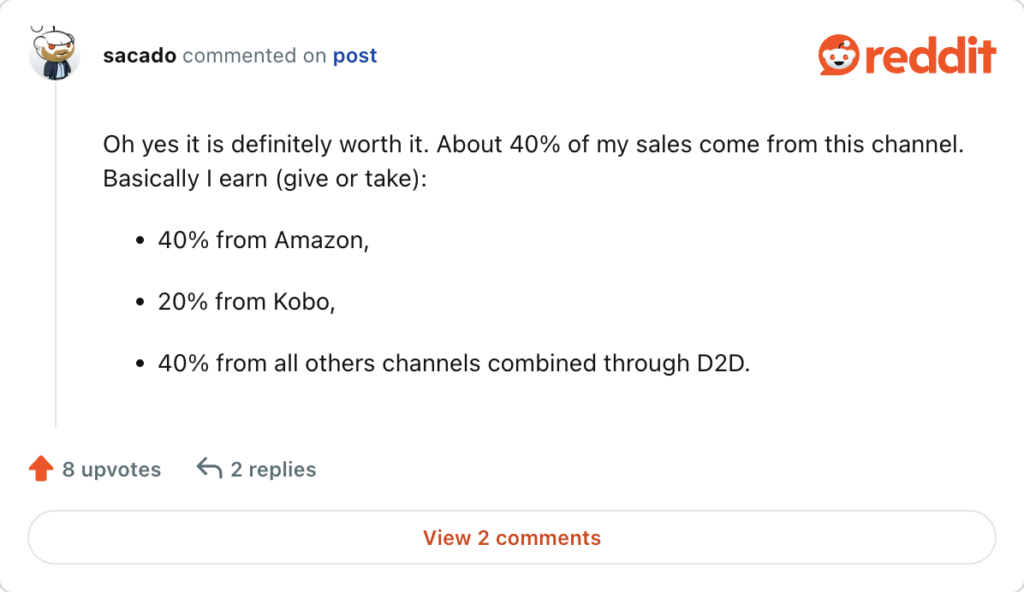
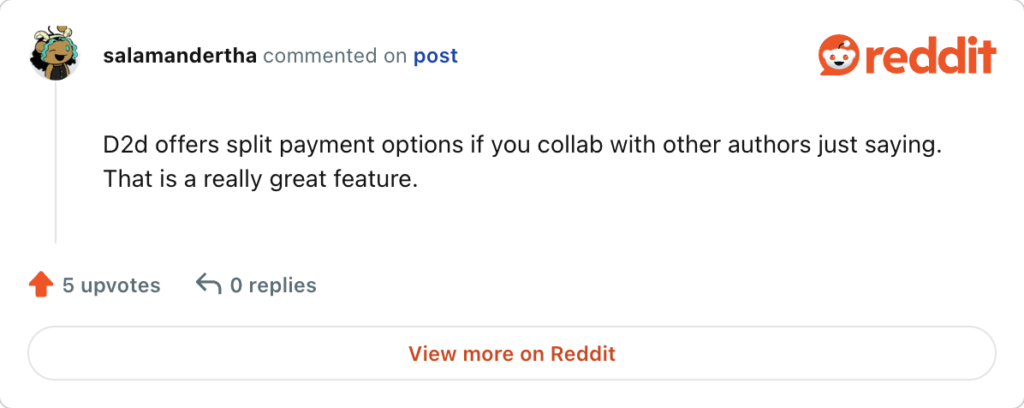
2. Apple Books
Apple Books is second to Amazon in making money from ebooks worldwide, except in Canada. When you publish with this platform, you can reach readers in 51 different Apple stores, and they pay you 70% of the book’s price no matter how much you charge. Authors need to use Findaway Voices for audiobooks.
Pros:
- The excellent part is Apple pays a nice royalty of 70%.
Cons:
- Authors must deal with too many complicated steps and a difficult-to-use interface.
3. Barnes & Noble Press
Barnes & Noble Press offers distribution for ebooks, print books, and even audiobooks through Findaway Voices. The royalty rate for ebooks is 70%, and for print books, it’s 55% after subtracting printing costs.
Pros:
- Distributes ebooks to 12 regions.
- High-quality print products.
- User-friendly interface for authors.
Cons:
- Print distribution is limited to the US.
- Formatting print books can be challenging.
- Does not offer direct distribution for audiobooks.
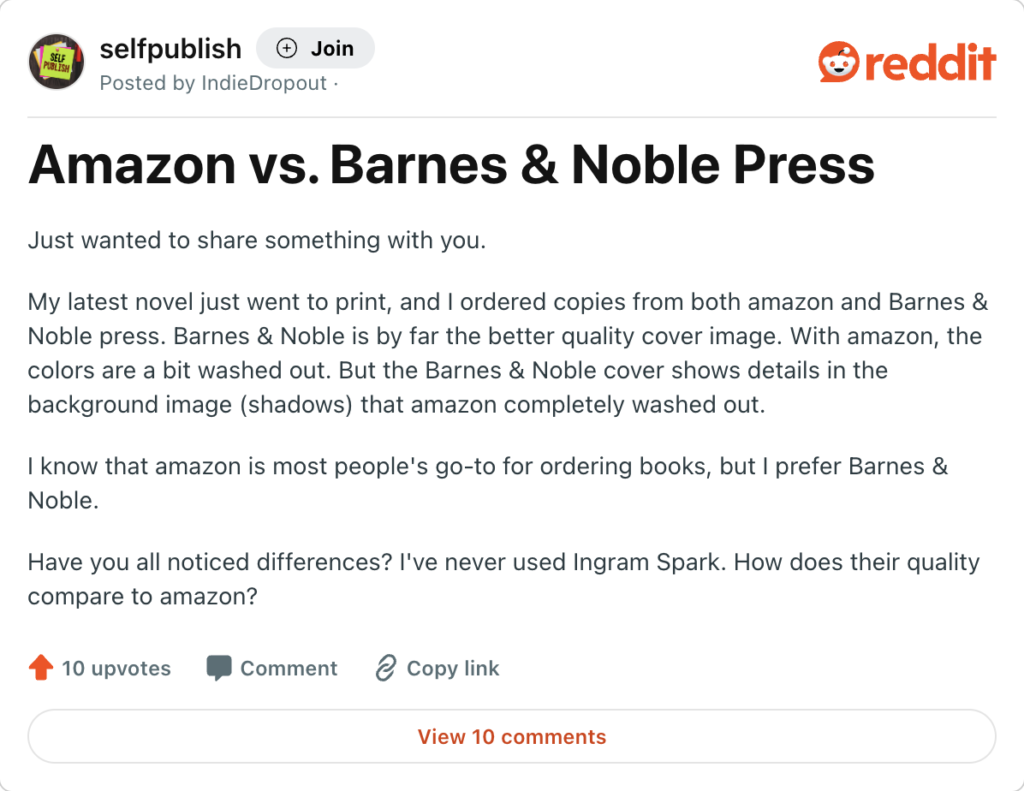
4. Google Books
Google Play Books reaches a global audience and distributes in over 70 regions. The royalty rate is a flat 70%, no matter the book’s price. Plus, if you let Google use 10% of your book as a free sample, they’ll index it in their search engine, significantly boosting its visibility.
Pros:
- A straightforward royalty system.
- Free book samples get indexed by Google, enhancing discoverability.
Cons:
- The platform’s interface could be more user-friendly.
- It doesn’t provide a way to distribute audiobooks.
5. Kobo Writing Life
Kobo Writing Life is a platform for authors to publish ebooks and audiobooks. While it might not be the biggest player in the US, UK, and Australia, it’s quite popular in Canada and New Zealand.
Kobo’s reach extends to 14 regions through 22 platforms for ebooks, and its audiobooks are available in 6 significant areas across four distribution sites. The royalty rate for ebooks is a straightforward 70%.
Pros:
- Offers direct access to Overdrive without having to share revenue.
- Features the best user interface among the options discussed.
- Provides a program similar to Kindle Unlimited, Kobo Plus without requiring an exclusivity agreement.
Cons:
- The complicated royalty structure for audiobooks might be off-putting for some authors.
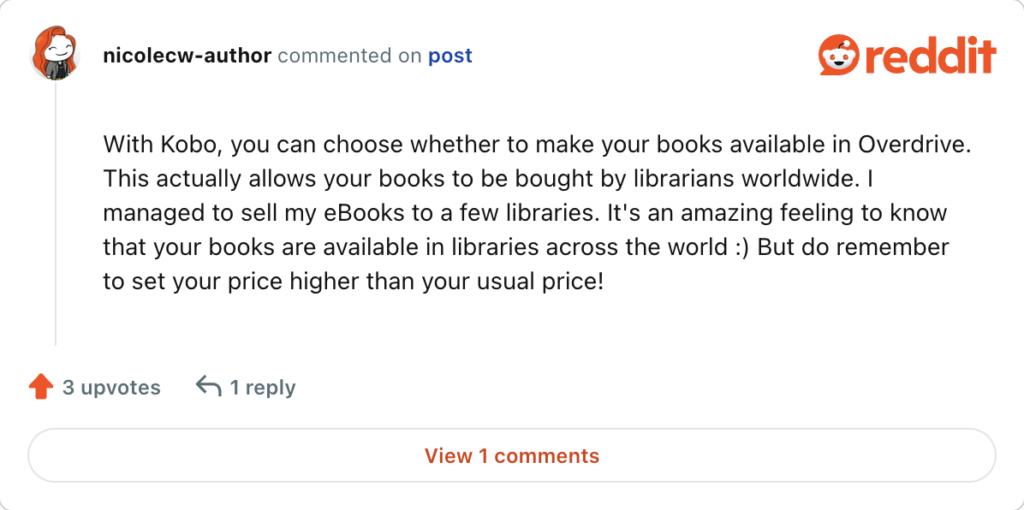
You can find even more self-publishing company options in our blog post.
To wrap up
Exploring self-publishing beyond Amazon KDP can be really beneficial for authors. Other platforms like Draft2Digital, Apple Books, Barnes & Noble Press, Google Books, and Kobo Writing Life offer their advantages, from wider book distribution to better earnings and support.
By publishing on different platforms, authors can reach more readers and protect themselves against issues with just one company.
What other self-publishing companies do you use besides Amazon KDP? Share your experience in the comments.


